Rajendra Kumar
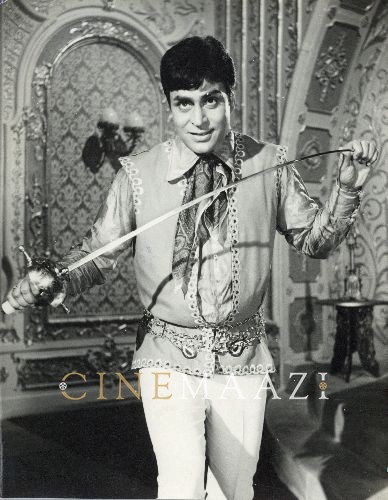
Subscribe to read full article
This section is for paid subscribers only. Our subscription is only $37/- for one full year.
You get unlimited access to all paid section and features on the website with this subscription.
Not ready for a full subscription?
You can access this article for $2 , and have it saved to your account for one year.
- Born: 20/07/1927 (Sialkot)
- Died: 12/07/1999 (Bombay)
- Primary Cinema: Hindi
- Parents: Lakshmichand Tuli
- Spouse: Shukla Tuli (Behl)
- Children: Kumar Gaurav , Dimple, Kaajal
With his handsome features, attention to decorum and engaging personality, Rajendra Kumar was one of the most successful actors to grace the Indian screen, so much so that perhaps few know he started his career not as an actor, but an assistant director. He later went on to become one of the legends of Indian cinema, appearing in nearly 70 films over a career that only spanned two decades.
Rajendra Kumar was born on 20 July 1927 into an affluent family in Sankhatra, Sialkot (present-day Pakistan). He was the oldest of five children. Rajendra’s grandfather Chajuram Tuli was one of the wealthiest men in town, and his father Lakshmichand Tuli was thus born into great wealth. Once he had completed his matriculation, Rajendra Kumar joined the Hailey College of Commerce in Lahore. Already interested in the movies—he would cut classes in school to catch shows in the theatre—Rajendra’s passion only increased with the advent of the talkies, even though he was destined to take charge of the family business. Fate had other plans: in 1947, while he was in his second year of college, the subcontinent was partitioned. On 26 August 1947, their family left for India with nothing but the clothes on their back. They moved into a shared accommodation in Delhi’s Subzi Mandi, a far cry from their ancestral palatial home. Rajendra was offered the job of an assistant sub-inspector in Delhi in early 1949, but he left for Bombay to pursue his dreams at the urging of his friend Raj Kumar.
Once in Bombay, however, his partnership with Raj Kumar ended and the young Rajendra was forced into sleeping on the footpath. Fortunately, his cousin Shyam Behl wrote to him saying that he had met the established lyricist Rajinder Krishan. Armed with the letter, Rajendra went to meet Krishan at Famous Studios. His film career thus began with odd jobs assigned to him by the lyricist. Fluent in Urdu, he would often be in charge of making fair copies of the dialogues written by Krishan.
In 1949, when H.S. Rawail was beginning work on Patanga(1949), starring Nigar Sultana and Shyam, Rajendra was employed as an assistant director. Rawail also asked him to play a walk-on part, stoking memories of his lost dreams of becoming an actor. By the time the film was completed, Rajendra’s salary had shot up, he was well versed with continuity, screen rehearsals and dialogue preparations, and he had endeared himself greatly to the stars of the film. However, H.S. Rawail did not encourage him to pursue acting, telling him he would never be successful at it. As he continued his work as Rawail’s assistant, he spent his leisure time at Ranjit Studios (later Ranjit Movietone). The owner,Chandulal Shah noticed his elegant features and offered him a small role in his production Jogan (1950) as the hero’s best friend. Sharing screen space with Dilip Kumar, Rajendra held his own, and people started taking notice of him. A few weeks after the release of the film, Shah offered him the lead role in Hum Log (1951) opposite Nutan, alongside other stalwarts like Shyama and Balraj Sahni. Excited about his big break, Rajendra Kumar was deeply disappointed when he was replaced by the actor Sajjan. He continued to assist Rawail, and worked with him on a total of seven films, including Sagai(1951), Saqi (1952), Shagufa (1953), Lehren (1953),Pocketmaar (1956) and Mastana(1954).
Having met Devendra Goel previously, Rajendra Kumar approached him again for a role and he was cast in the film Vachan (1955) as the lead. The film proved to be a huge box office success and a silver jubilee film. A few months before the release of Vachan, he married his friend’s cousin Shukla Behl. Riding the success of the film, he signed Toofan Aur Deeya (1956) with V. Shantaram, which was also the debut in an adult role of Shantaram’s niece, Nanda. Noticing his potential, both Mehboob Khan and the Wadia brothers offered him contracts. On the advice of his wife, Rajendra Kumar chose to work with Mehboob Khan in Awaaz. Shooting started simultaneously for the widely acclaimed Mother India (1957), in which Rajendra Kumar was cast as Nargis’s dutiful son, Ramu.
Meanwhile, Rajendra Kumar had his first son with Shukla in 1956. They named him Manoj at birth, though he was lovingly called Bunty by his parents, and came to be known to the Indian film audience years later as Kumar Gaurav. The couple also had two daughters, Dimple and Kaajal. On the professional front, Rajendra Kumar’s looks and acting prowess ensured that he was beginning to be cast in roles that seemed tailor-made for the tragedy king Dilip Kumar. The first of these was Devar Bhaabi (1958). New to success himself, Rajendra Kumar started supporting newcomers to the industry early. Later, the numbers of his beneficiaries would swell to include stars like Dharmendra, Feroz Khan and even Rajesh Khanna.
By 1959, Rajendra was well on his way to the top. He appeared in Talaq and Goonj Uthi Shehnai in the same year. Supported by Ustad Bismillah Khan’s virtuosity, he played a shehnai player in the latter to perfection, and the film went on to be the fifth highest grosser of the year. This was his first big commercial success, following his previous releases Khazanchi (1958), Ghar Sansar (1958) and Santan (1959). All his films in 1959, Do Behnen, Dhool Ka Phool and Chirag Kahan Roshni Kahan, made huge earnings at the box office. His turn opposite Meena Kumari in the last was lauded for his ability to match her pace even in a film which demanded a measured performance. The next decade proved to be fortuitous for him, and he started it playing a doctor in Patang(1960). He also worked on a Gujarati film, Mehndi Rang Lagyo, a massive hit. Soon after, Maa Baap (1960) starring Rajendra Kumar became the first film to run for 25 weeks in the same theatre. His next, Aas Ka Panchhi (1961), the debut of J. Om Prakash as producer and Mohan Kumar as director, overshot this record, running for 28 weeks at Novelty cinema. Aas Ka Panchhi was lucky for Rajendra Kumar for more than this: while shooting for the film, he met Raj Kapoor for the second time, and the legendary filmmaker broached the idea of Sangam (1964) to him. The beginning of a lifelong friendship, this chance meeting led to the two actors playing best friends in love with Vyjayanthimala in the iconic film, one of the most commercially successful films of the decade. By the end of 1961, Rajendra Kumar had six consecutive box office hits to his credit, with not a single flop in between. This led to him being dubbed ‘Jubilee Kumar’, an epithet that none before or after him have enjoyed.
Rajendra Kumar then made the sagacious choice of acting in Mere Mehboob (1963) opposite Sadhana, a Muslim social set in Lucknow that showed off his Urdu skills and his tehzeeb to great advantage. His controlled performance as Anwar in the film was highly acclaimed. In the same year, he also appeared in Dil Ek Mandir a film that had the rare honour of being reviewed by Dilip Kumar, Akeli Mat Jaiyo opposite Meena Kumari, Hamrahi, another hit film and Gehra Daag opposite Mala Sinha. In 1964, he starred opposite the young actress Saira Banu in Ayee Milan Ki Bela, with Dharmendra in the second lead. A colour movie set against the backdrop of Kashmir, the film with its two attractive leads was immensely visually appealing.
Known for choosing roles that were widely different from each other, Rajendra Kumar starred in Aman (1967), a film about the consequences of nuclear warfare. He even convinced the international philosopher Bertrand Russell to appear in the film’s opening scene! Unfortunately, though the film was a success in Iran, Lebanon and Egypt, it did not enjoy a good run in India. In the interim, unfounded rumours of his affair with Saira Banu had begun hurting both the stars’ reputation. For a while, Rajendra Kumar’s films like Palki (1967) did not enjoy the rousing success he was used to. Jhuk Gaya Aasman (1968) was his last film with Saira Banu. In the next year, he cannily decided to shift genres to keep up with the changing times, and starred in Talash, a romantic mystery with Sharmila Tagore in a double role, and Shatranj, a spy thriller. Despite his efforts, his career had started declining by 1969. In 1970, he appeared in Geet and Raj Kapoor’s Mera Naam Joker. Attempting to revive the heights of his popularity, he even appeared in a double role—the new trend—in Gora Aur Kala (1972). His next two films, Gaon Hamara Shaher Tumhara (1972) and Aan Baan (1973), were unsuccessful, and the latter was an all-out flop.
After 1973, Rajendra Kumar made some special appearances in Punjabi films, and within the next two years, he was accepting character roles. He enjoyed a taste of his former success with Saajan Bina Suhagan (1978), but a change in his career role was just around the corner. As he entered the 80s, acting in secondary roles, his son Kumar Gaurav, who had been working as an assistant director, expressed a wish to become an actor. Rajendra Kumar immediately put his energies into launching him, and even completed the direction of his debut filmLove Story (1981) when the director Rahul Rawail stepped down due to some differences. The film proved to be a blockbuster hit.
Phool (1993) was the last film that Rajendra Kumar appeared in. While shooting for the film Ek Tha Dil Ek Thi Dhadkan (1998), he fell gravely ill and soon left the country for treatment. Unfortunately, Rajendra Kumar was diagnosed with blood cancer, and he passed away of a heart attack in a hospital in Mumbai on 12 July 1999. Known for being a warm, cheerful and hardworking man, a star who never complained about multiple retakes, and the bosom friend of stalwarts in the industry like Raj Kapoor, Rajendra ‘Jubilee’ Kumar left behind an unmatchable legacy.
A few excerpts and anecdotes from Seema Sonik Alimchand's 2020 release Jubilee Kumar: The Life and Times of a Superstar (Hachette India):
1. Rajendra Kumar, even as a child, would often sneak off to watch movies with his friend. On one such occasion, he was caught by his grandfather. Seema Sonik Alimchand recounts this in hilarious detail:
“Mission Movie had begun!
Heer Syal, the romantic fable starring Baby Noor Jehan, ended half an hour past midnight. The lights were out at home when Rajendra crept in. As surreptitiously as he had slipped out, he stole under the covers of his grandfather’s bed, but sat up with a start when a voice muttered in the darkness, ‘I’ve been waiting for you…Where did you run off to?’
‘Dadaji!’ the boy exclaimed in alarm. ‘You’re awake?’
‘Answer my question first!’ Chajuram said sternly. ‘Does your mother know of these nocturnal escapades of yours?’
‘No, she doesn’t,’ his grandson stammered. ‘But…’
‘I know you went to watch a film.;
‘Yes, cinema…’
‘You moron!’ Chajuram thundered at his grandson. ‘Instead of concentrating on your studies, you chant “cinema, cinema!” day in and day out! I’m warning you right now: mend your ways or some day you will turn into cinema!’
The old man had intended his words to be a reprimand, a message of caution. But, unbeknownst to him, they would become a prophecy for the future.”
2. Though the young Rajendra nurtured a wish to become an actor even as an assistant director to H.S. Rawail, the director discouraged him even when he was cast in Jogan, saying "You did get a break, but acting is not for you...Concentrate on the job at hand."
Some years later, Rajendra Kumar took Rawail to the premiere of Vachan, and he remembers:
“For the premiere of Vachan, I took along Rawail Saab and his wife Mrs Ranjana Rawail, who loved me the way a mother would her son. After the film was over, Rawail Saab drove us home. Throughout the drive, I didn’t bring up the topic of the film in conversation, because I was nervous, still apprehensive that the director might not have cared for my performance. But when we reached home and I stepped out of the car, he too did so. Then he just stood there, gazing at me… I had no idea what he could possibly want ti say, but suddenly he hugged me and kissed me on the forehead. ‘Son’, he said,’ I am proud of you!’ Tears rolled down my eyes. I was overcome with emotion at the thought that this man, who’d never believed I could act in a film, was now acknowledging that he was proud of me!”
3. While shooting for the film Aas Ka Panchhi, Rajendra Kumar met Raj Kapoor, leading to their collaboration in the legendary Sangam:
“When J. Om Prakash okayed a shot by calling out ‘Cut!’ spot boys hastened to the stars with napkins and spray bottles to refresh them. In the flurry of activity that ensued to set up the next scene, Rajendra, who was desperate for a smoke, walked off the floor and stepped out. Leaning against his car, he tapped out a 555 from his cigarette case, lit up and blew out a ring of smoke, his upturned face presenting a perfect profile for anyone who might be observing him. It was at this moment that he spotted Raj Kapoor from the corner of his eye. The artiste was emerging from the adjoining sets.
Rajendra greeted him from afar with a pranam. Kapoor responded with a smile and sauntered over to the younger actor. But in the very next instant, Rajendra’s heart sank. Raj Kapoor had hoisted himself onto the bonnet of the other actor’s shiny new car. As the car heaved under the senior star’s weight, Rajendra groaned inwardly. But, oblivious to his misgivings, Raj Kapoor slid over the bonnet, his head reclining against the windshield, and puffed away on his own cigarette. For a few moments, both stars continued to smoke in silence. Then Raj Kapoor turned to face Rajendra Kumar.
‘Yaar, woh film banaye? Buddy, shall we make that film?’ he asked, his eyebrow cocked quizzically.
Rajendra knew instinctively what he was talking about and replied, ‘I’ll be happy to! Karte hain. Let’s go ahead with it!’
‘Theek hai. Fine,’ the other man said in response, ‘So what time do you pack up this evebibg?’
‘Six-thirty.’
‘That early! I pack up at ten every night.’
‘Oh, but I don’t work beyond six-thirty,’ Rajendra told him.
‘All right, then. I too will pack up early today and we can go to my studio and discuss the film.’
‘Done!’ Rajendra agreed, stubbing out his cigarette.
At 6.30 that evening, the two actors drove down to Chembur in Raj Kapoor’s blue Buick convertible, with Rajendra Kumar’s chauffeur following them in the other car. This was the jubilee star’s first visit to the famous cottage in R.K. Studios.
As Rajendra made himself comfortable on the all-white divan placed on the floor in one corner of the room, Raj went in to freshen up, asking his attendant John to bring in drinks for them. Over the next few hours, the two stalwarts lounged against the white cotton bolsters, discussing films, their likes, dislikes and film philosophies. Then, finally, they came to the crux of the matter that had brought them together: Sangam, a story that would have the two leading men Raj Kapoor and Rajendra Kumar playing best friends. That day would set the course for their lifelong friendship.”
The shooting of the film was no cakewalk either, with two strong-willed individuals on the set. However, both the stars had immense respect for each other and often took the others' suggestion, as Rajendra Kumar himself remembers:
“I recall that when Rajji recorded ‘Dost dost na raha’, I wasn’t there. I was shooting elsewhere. So when I heard the song for the first time, right before the shoot, I said to RK, ‘It doesn’t sound right. Song galat hai. It sounds contrived. How can you sing, “Dost dost na raha” to the very friend who has sacrificed his love for you? And the woman you loved, the woman who married you—you accuse her of being unfaithful, of creating a situation where “Pyar pyar na raha, where love is no longer love”? It’s so wrong, so unfair!’ Rajji responded by saying, ‘The song is beautiful. Let me picturize it and then you’ll see. I will make sure I justify its inclusion in the film.’ Then for three days running, we shot the song, with Rajji playing the piano and lip-synching words reproaching his childhood friend for his betrayal, while I, in the role of Gopal, sat silently on a chair facing him, drink in hand, and Vyajayanthimala sat opposite me on another chair. Finally, on the third day, I got up and told Inder Raj, the writer, ‘After the song ends, Gopal will speak, okay? I have a dialogue that I want to add to the scene.’ Then I told my friend RK, ‘Gaane ke baad shot lagaiye, main ek dialogue boloonga. Once the song is over, set up the shot. I have a dialogue to add.’ ‘Kya dialogue bologey, ji? Now what dialogue is that, pray?’ he asked. ‘Aap shot toh lagaayo. Why don’t you set up the shot first?’ I insisted. ‘Then you’ll see.’ Great filmmaker and good friend that he was, Rajji actually did set up the shot without further questions. As soon as the song ended, I stood up and delivered my lines, before walking out of the scene. I could hear Raj shouting [in frustration] at Inder Rajji, ‘Dekho, Chacha, mere kiye karaye ki aisi ki taisi kay gaya! Just look at the way he screwed up all my good work, Uncle!’ I turned around and retorted, ‘Yaar, tum jo teen din se gaana gaa gaa ke humari aisi ki taisi kar rahe the, uska kya? What about the torture you put us through over the last three days, singing to your heart’s content without pause? What of that, my friend?’ That was typical of the banter we shared, [the banter that was a part of] our friendship.”
4. Rajendra Kumar was known for his respectful behaviour with his female co-stars, and he maintained close friendships with many of them. As Asha Parekh recalls, “We shot Gharana in Mysore. I clearly recall a particular incident. While [we were] shooting for a song in Brindavan Gardens, one of the bystanders made a crude remark about us. Rajinderji, with stick in hand, ran after that guy to hit him! I realized then how much he respected women and how well he took care of them.”
5. As his own career began flagging in the 80s, Rajendra Kumar decided to concentrate on launching his son as an actor after a conversation with him. Seema Sonik Alimchand details the heartwarming encounter in her book:
“’And how’s work going? Are you enjoying being an assistant director?’
‘Yes. It’s cool.’
‘It’s been two years, right, since you began working with Rajji? That’s quite a long time. You will soon be twenty-two years old. You should start planning ahead now.’
‘Is this a serious discussion, Papa?’ Gaurav smiled and pulled up a chair to sit facing his somber father.
‘Sure. It can be.’
‘Papa, I want to become an actor like you.’
Although slightly taken aback, Rajendra was overwhelmed with a feeling of joy. ‘Done!’ he said enthusiastically. ‘We’ll begin work on it from tomorrow itself.’
‘Wow! That fast?’ Gaurav smiled, pushing back his chair.
‘Yes, once the decision is made, we shouldn’t waste any time.’
‘All right, Papa.’
‘Now go and get some sleep, son. Your dreams are about to materialize’, said the indulgent father, a faraway look in his eyes.
‘Goodnight, Papa.’
‘Goodnight, Bunty.’
A slow smile spread across Rajendra’s face as he contemplated his son walking into the house. There’s my future, he thought. My son will take my legacy forward.”
-
Filmography (81)
SortRole
-
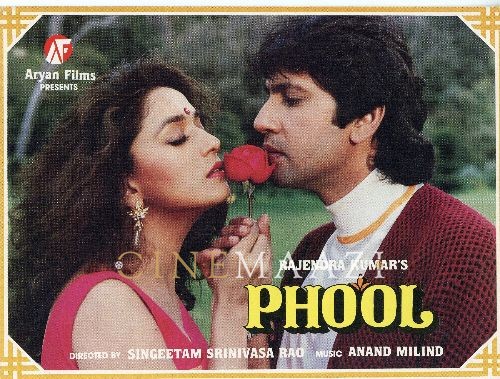
Phool 1993
-
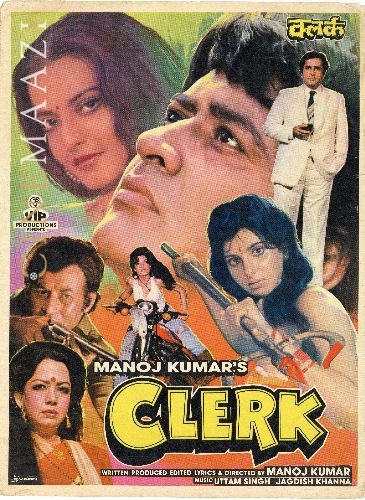
Clerk 1989
-
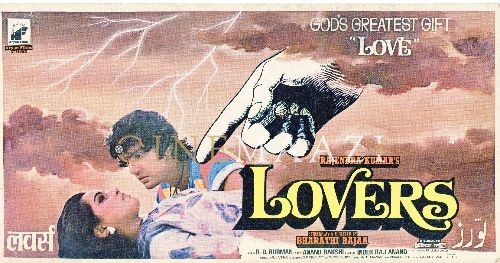
Lovers 1983
-
Main Tere Liye 1983
-
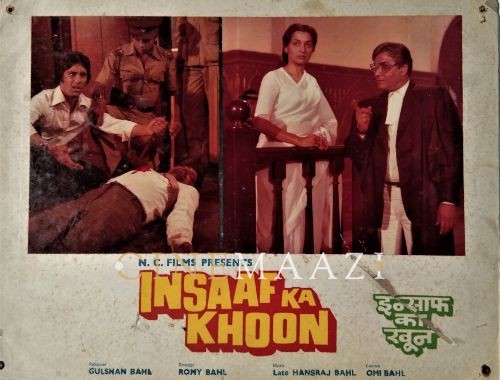
Insaaf Ka Khoon 1983
-
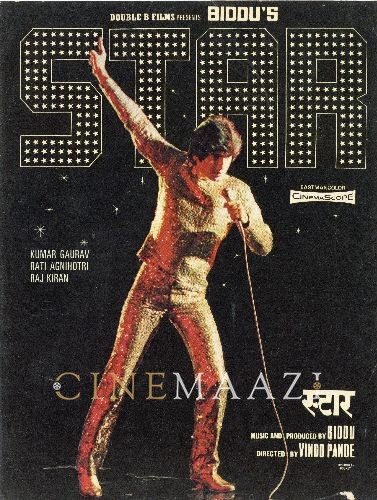
Star 1982
-
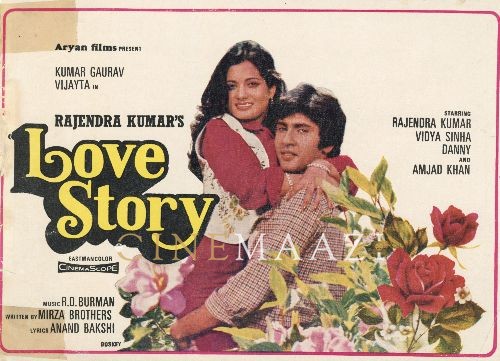
Love Story 1981
-
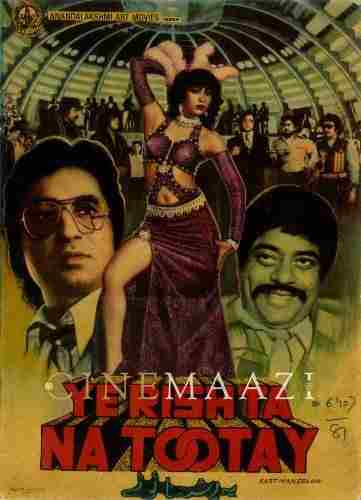
Yeh Rishta Na Toote 1981
-
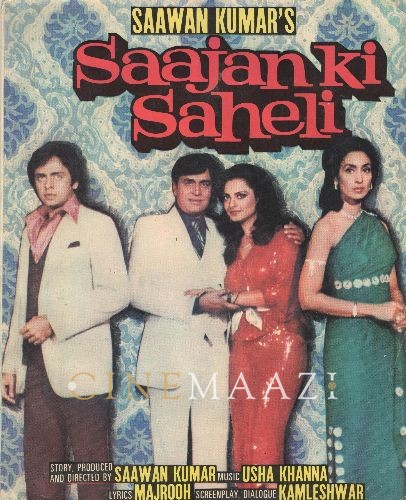
Saajan Ki Saheli 1980
-
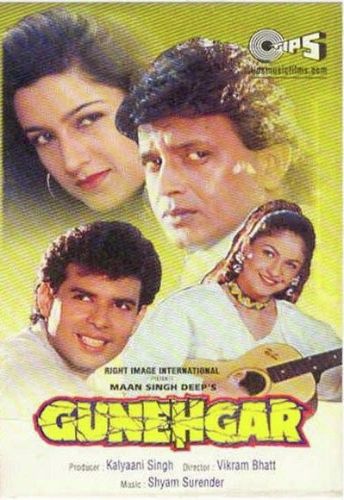
Gunehgaar 1980
-
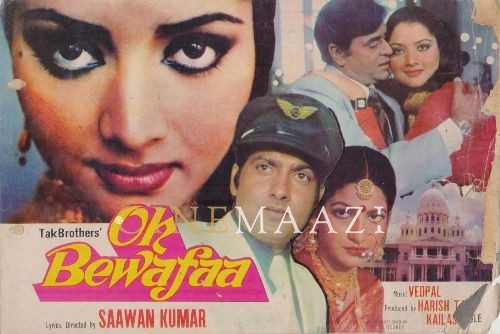
Oh Bewafaa 1980
-



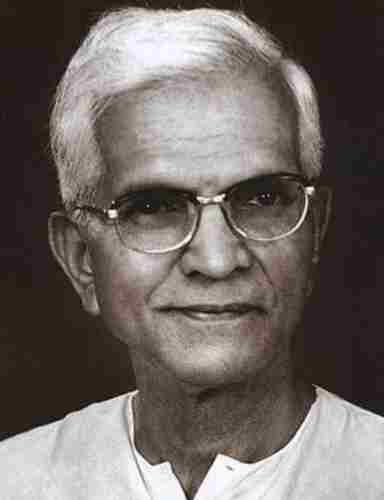
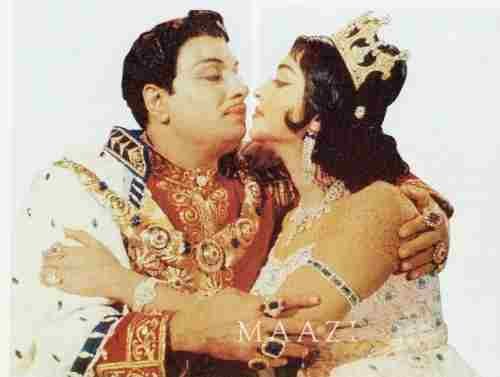
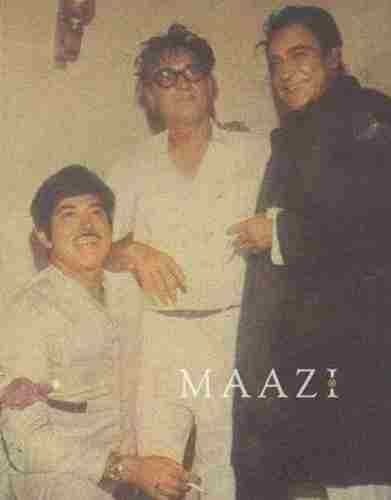
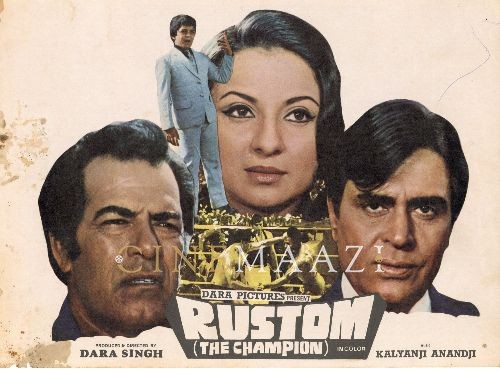
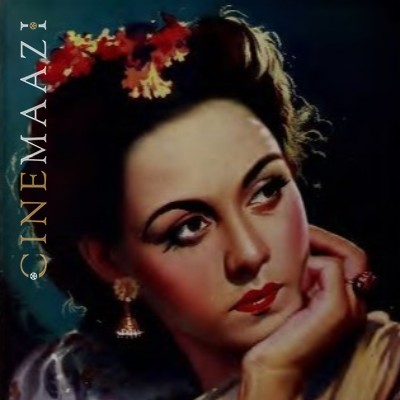

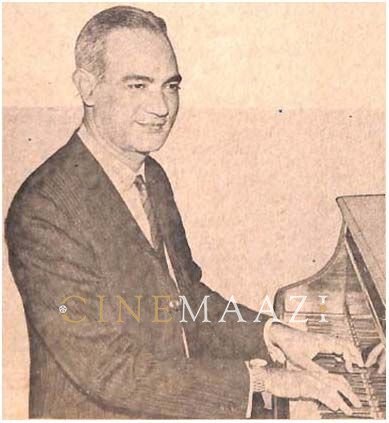
.jpg)



